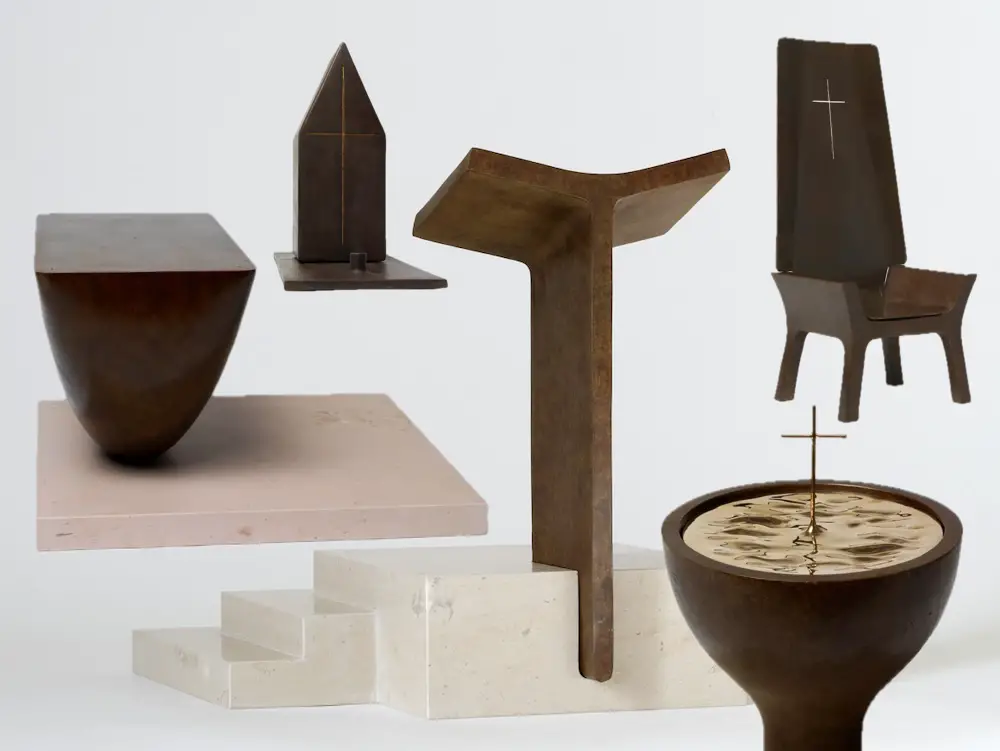In about a year from now the Notre Dame Cathedral in Paris will finally reopen to the public after an extensive renovation following the fire that destroyed large parts of the 850-year-old church in April of 2019. In addition to the reconstruction, new liturgical pieces had to be made to replace the destroyed ones. The task was awarded to 52 year old French designer and sculptor Guillaume Bardet to complement the restored interior with five essential religious elements.
New Religious Objects for Notre Dame
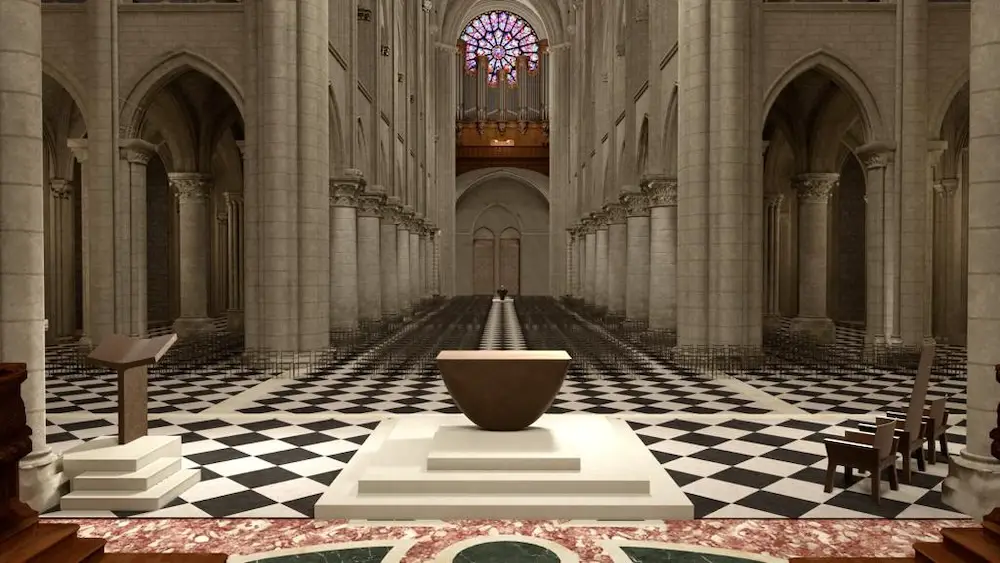
In a momentous decision the Archbishop of Paris, Mgr Laurent Ulrich, has entrusted Bardet (out of more than 70 applicants) with the realization of the religious objects for the renovated Notre Dame. Bardet is bringing his vision for the Cathedral’s altar, lectern, cathedra (often called a Bishop’s throne) and two associated seats, tabernacle (a fixed, locked box in which the Eucharist is stored as part of the “reserved sacrament”), and baptistery (the area and font that holds the holy water for baptisms) to life in bronze.
Guillaume Bardet, renowned for his profound and minimalist approach, chose bronze as the material for these five pieces, to highlight their refined and graceful forms.
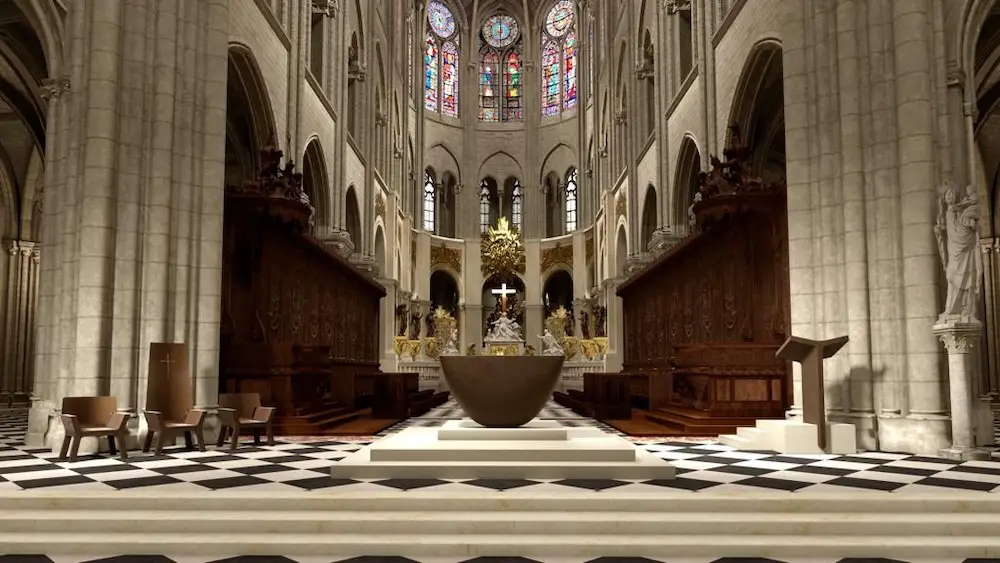
The altar “is a balance between the sacrificial dimension of the altar and the warm dimension of a table, evoking Christ’s last meal,” explains sculptor Guillaume Bardet.
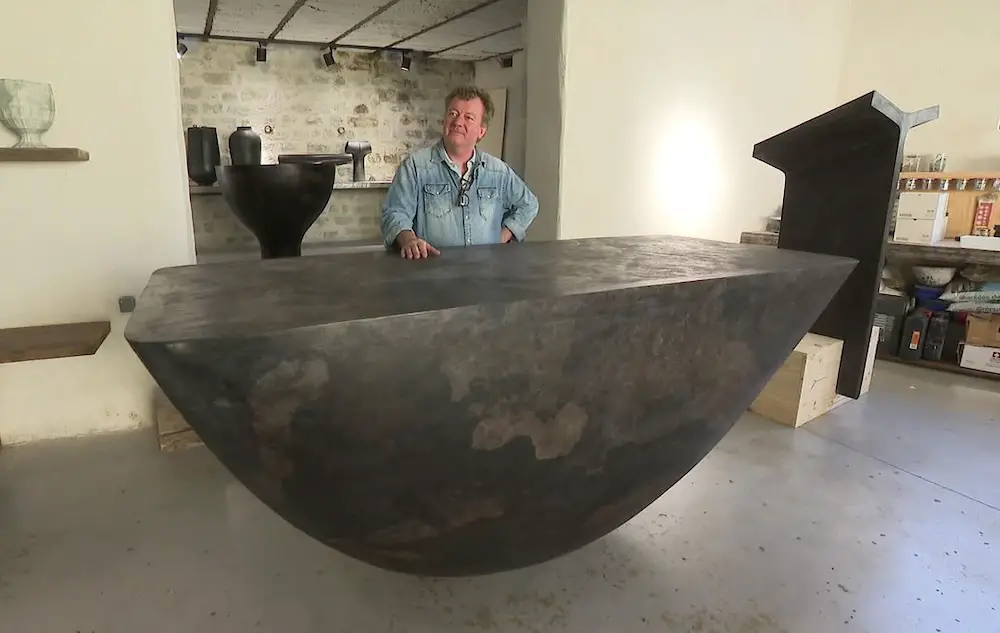
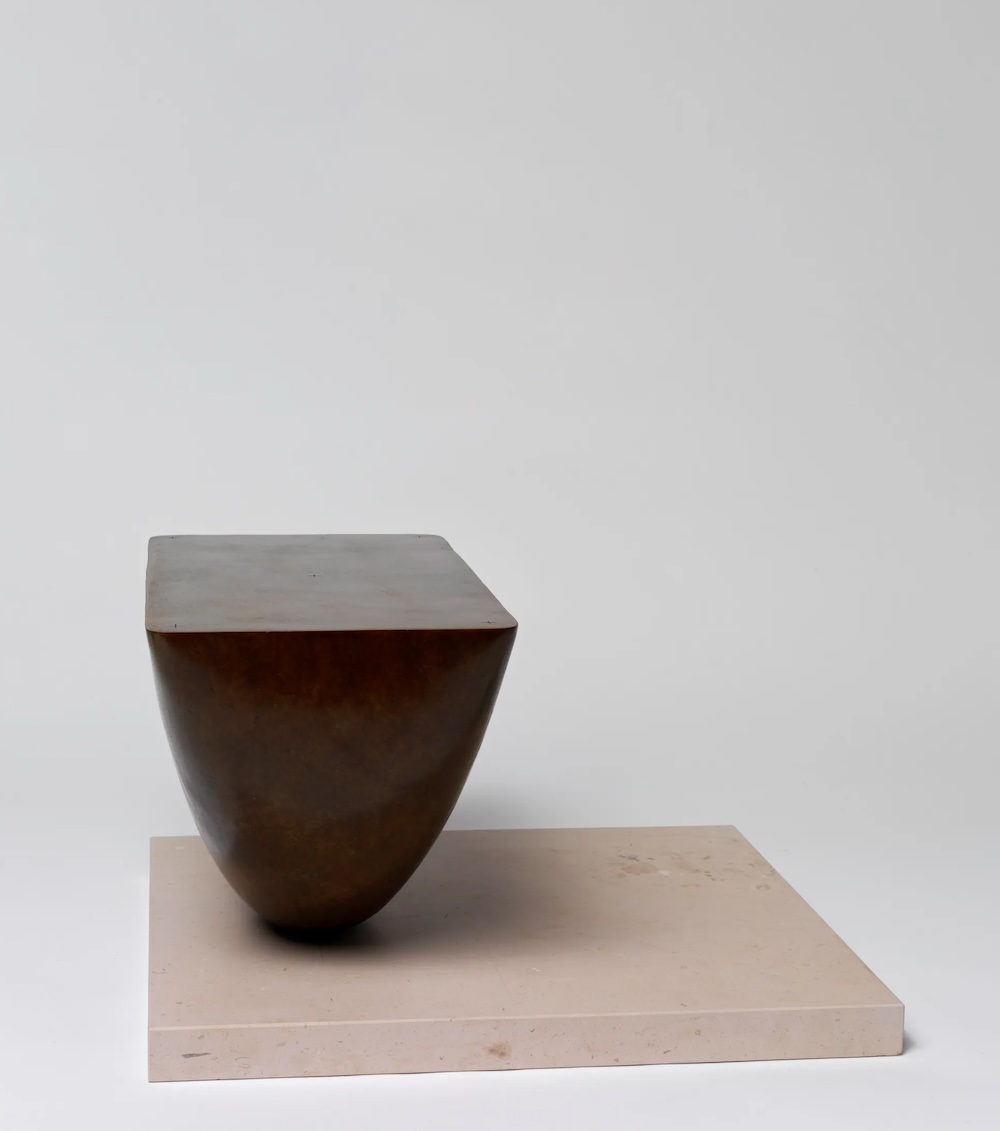
The ambo, or lectern, characterized by its distinctive capital T shape symbolizing freedom, was the initial concept that took shape within his vision.
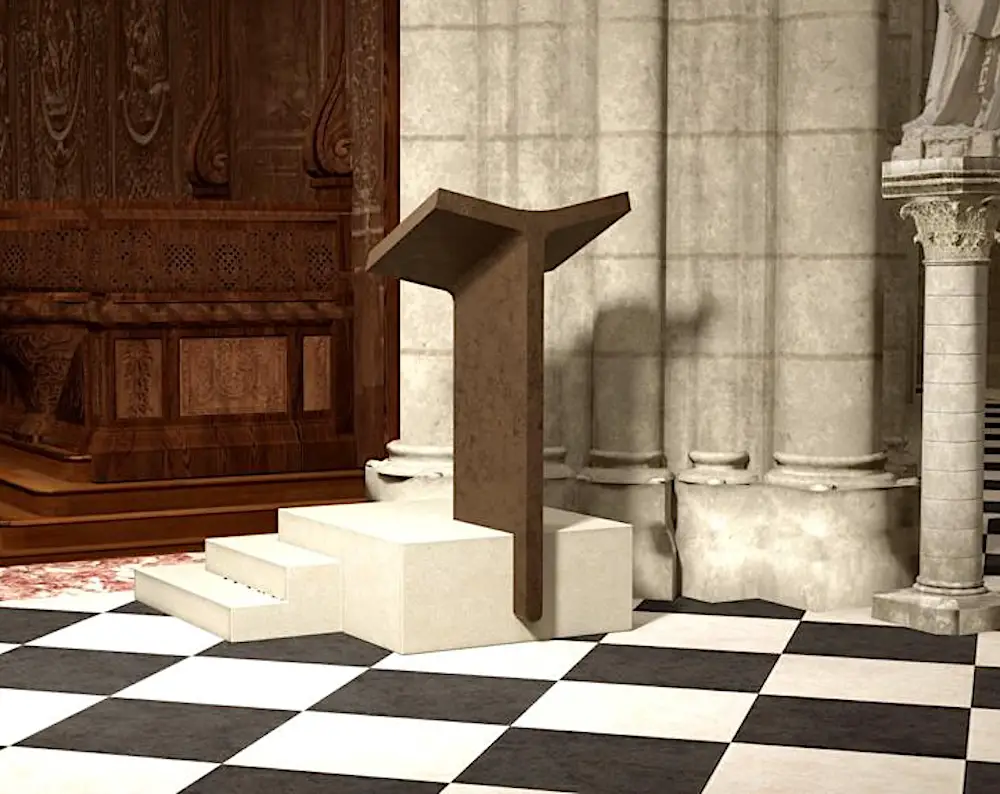
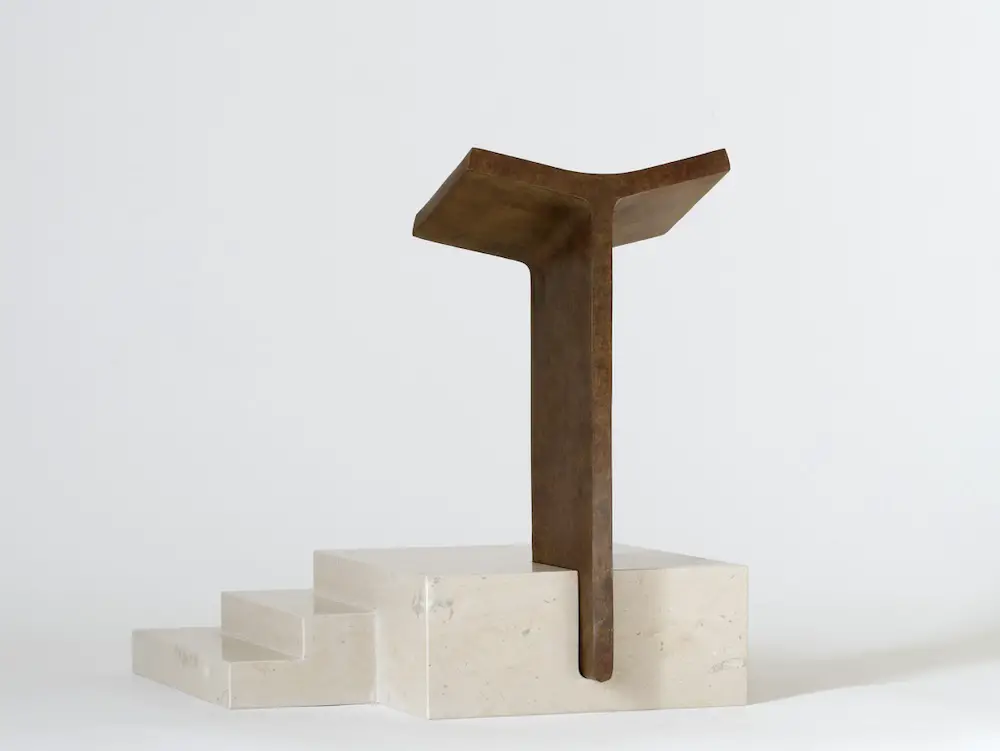
Likewise, the baptistery embodies circularity, allowing visitors to move effortlessly within its space. Bardet’s intention was to embrace organic shapes that evoke a profound sense of permanence and spiritual devotion.
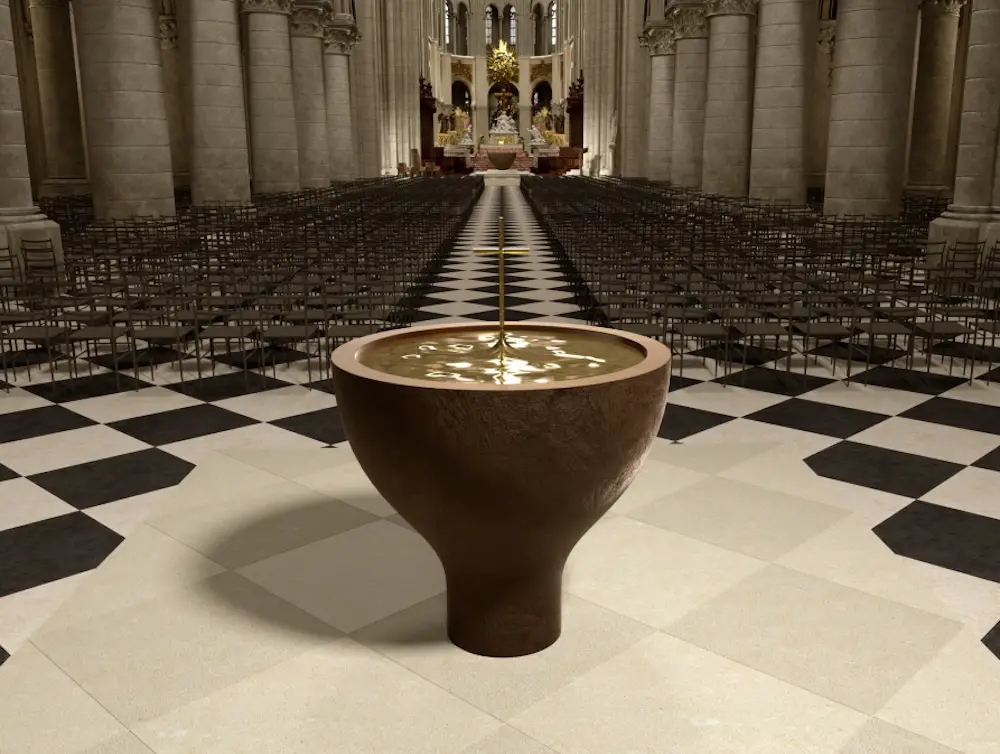
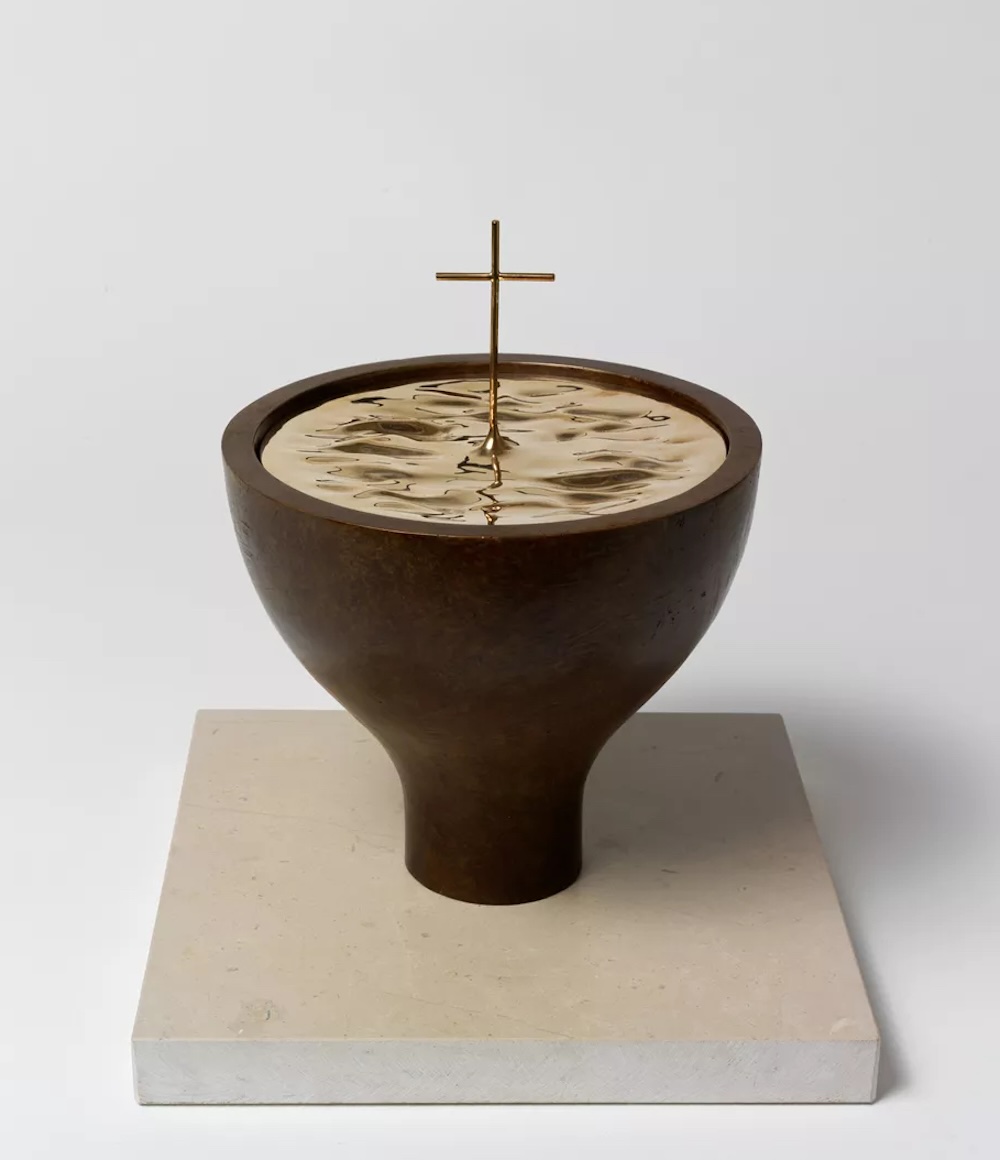
Of the cathedra (the Liturgical throne and two associated armchairs), Bardet says “This is the curule, the Roman stool whose shape I reworked. The base is identical for the 3 armchairs, the different status of the priests being represented by the backs. That of the archbishop is made up of a large bronze veil which rises into the sky, decorated with a cross which lets the light pass through, like a spark. The associated armchairs will have this same veil, but less high.”
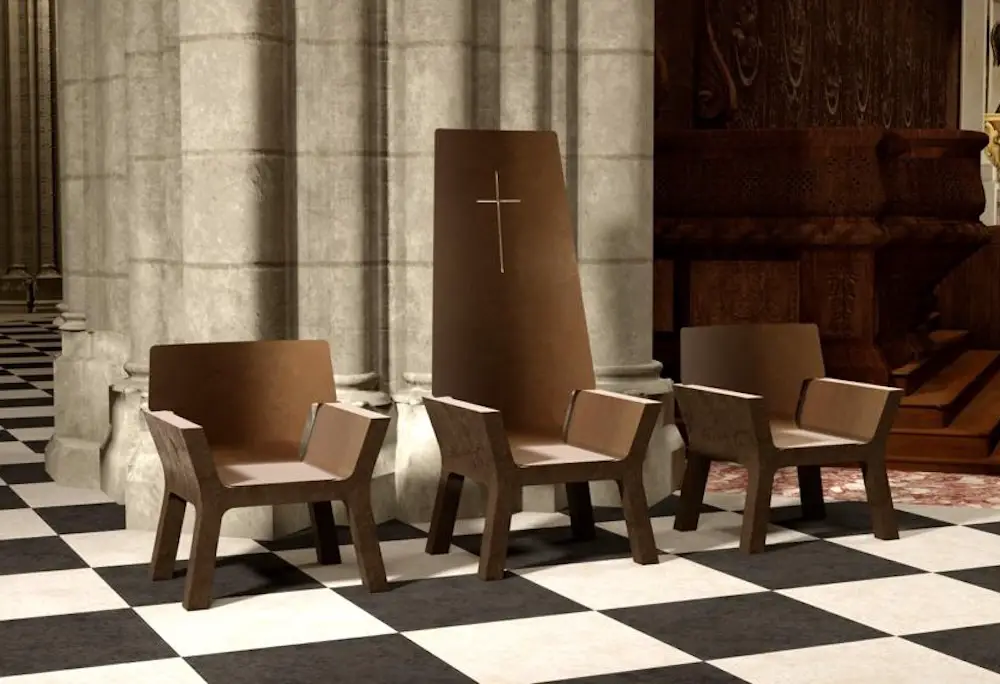
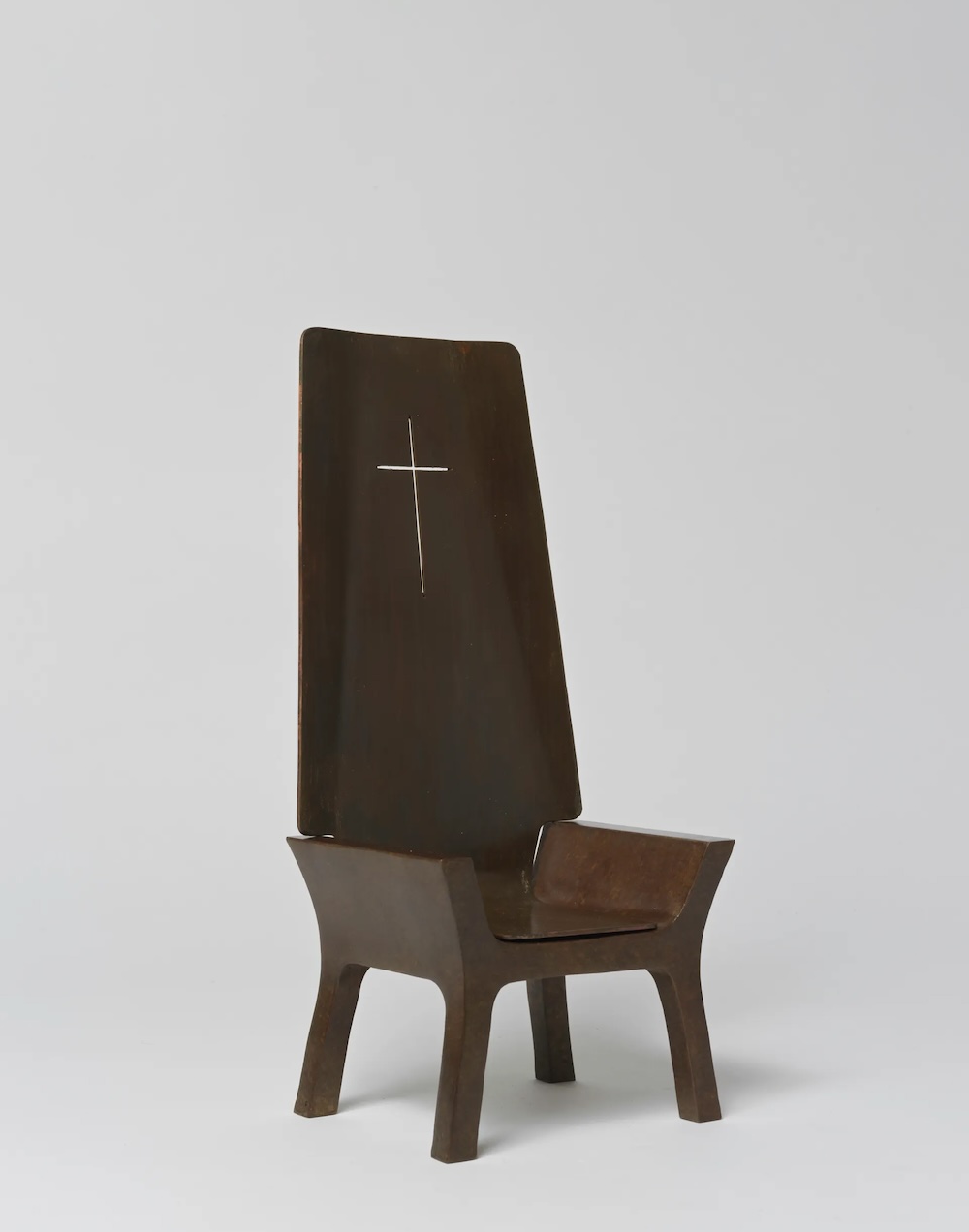
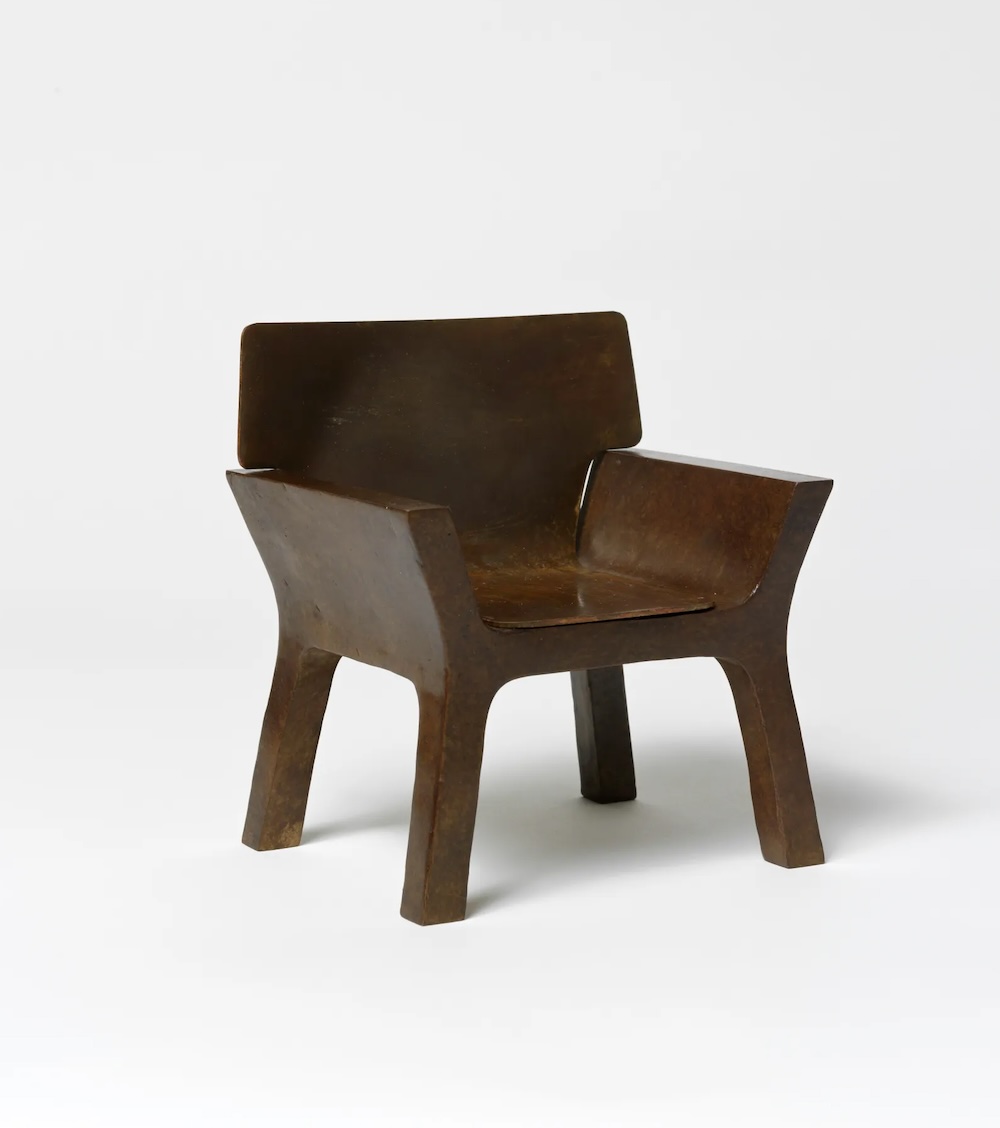
“I wanted natural forms for a work on the immutable”, explained the designer. His exceptional designs achieve just this: they effortlessly harmonize tradition and innovation, perpetuating an aura of sanctity that transcends the constraints of time and leaves a lasting impression of wonder and reverence.
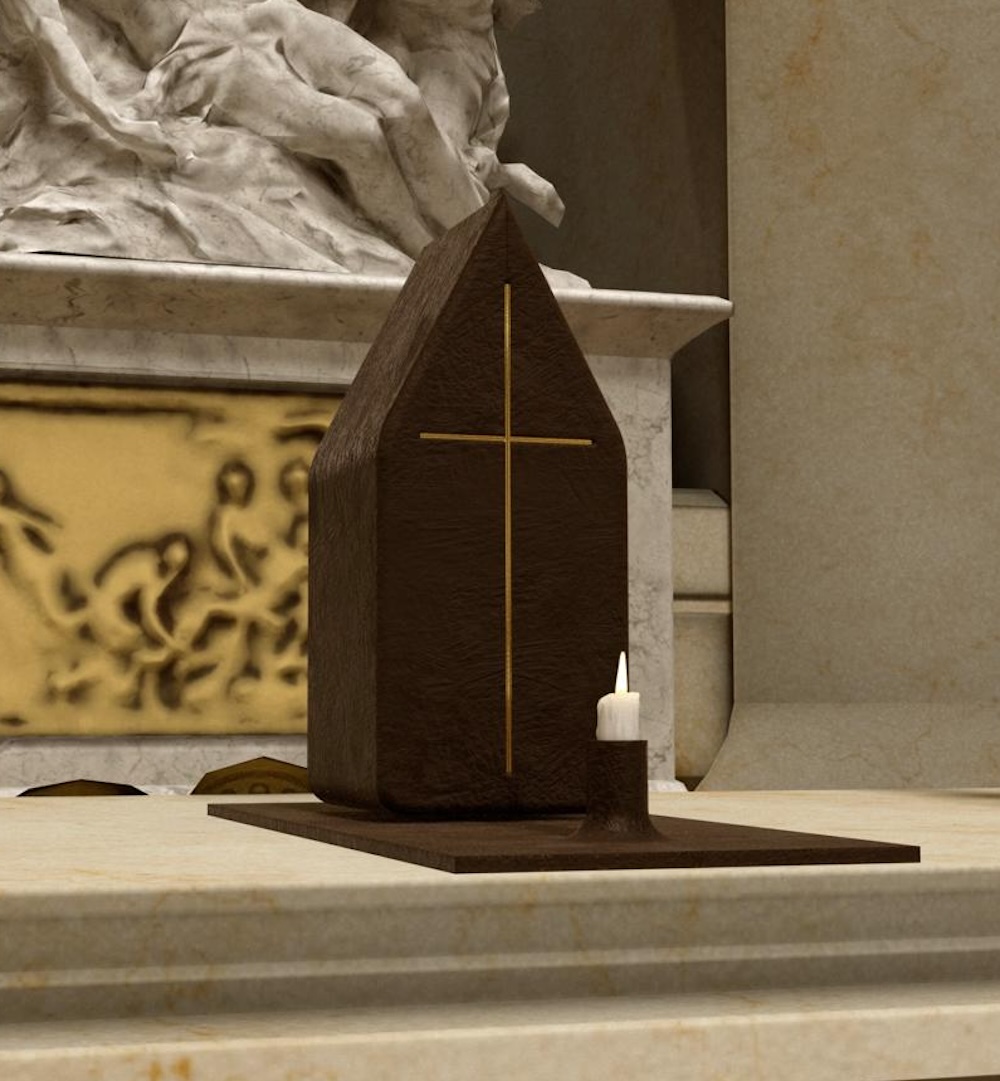
‘They should resonate with conviction for Catholics and captivate the attention of non-Christians,’ he comments. ‘Each element carries its own distinct identity, symbolism, and purpose, yet together they form a cohesive ensemble that engages in a meaningful dialogue.
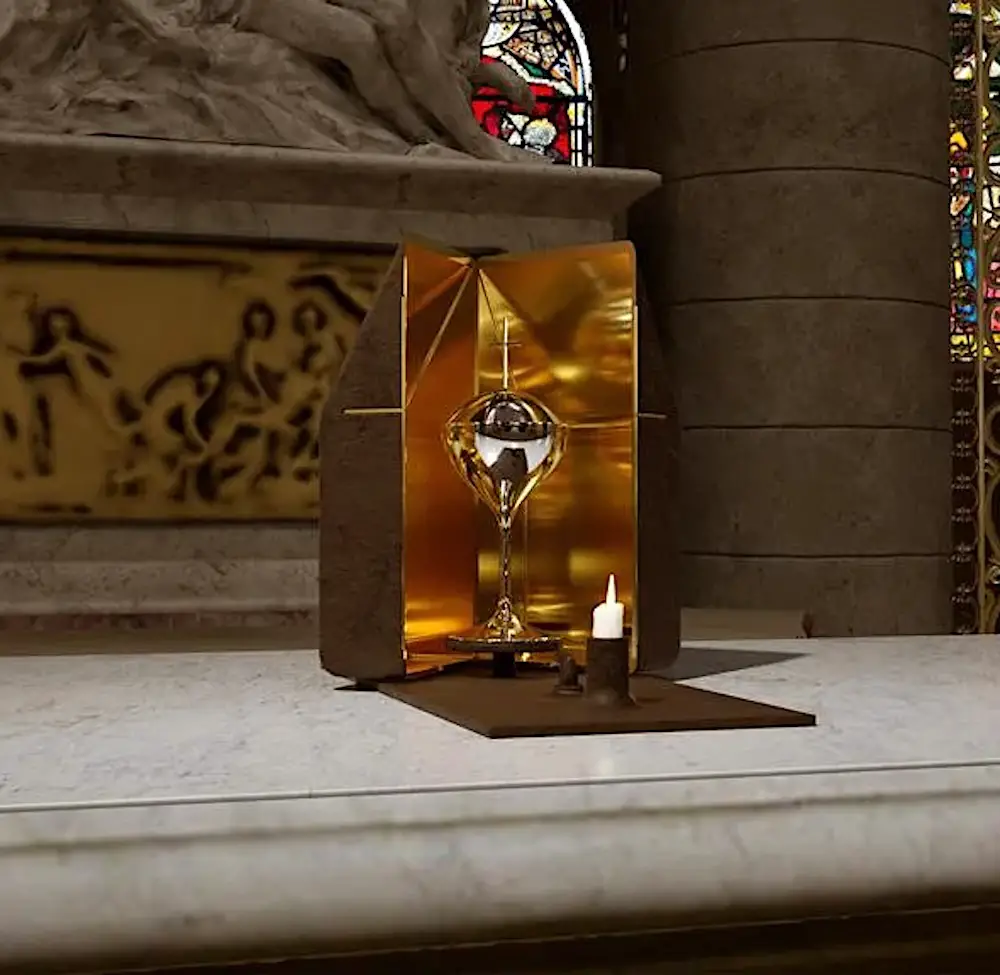
These pieces should exist within and beyond the realm of liturgy: not demanding attention, but also not hiding away. They should have a subtle yet undeniable presence. The pieces should embody the essence of the past, embrace the present, and welcome the future.’
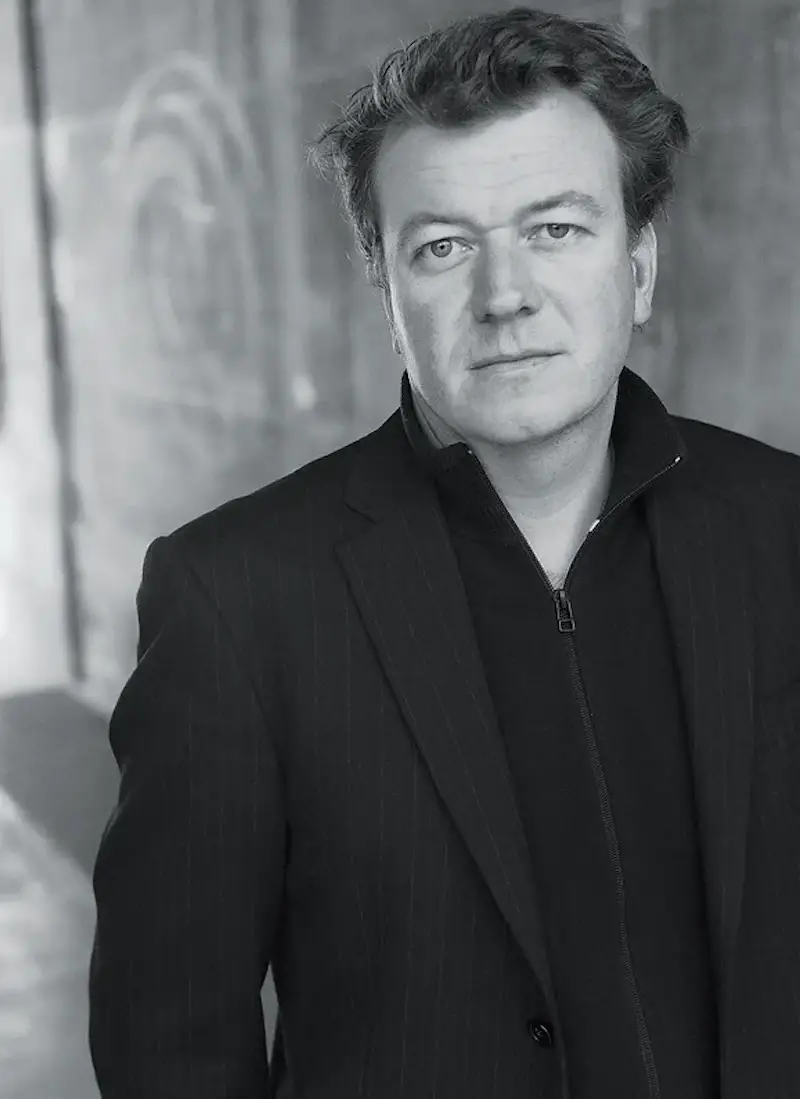
The Cathedral will reopen to the public in December 2024.
images and information courtesy of Aleteia, Fondation Bettancourt Schueller, Galerie Kreo, Wallpaper Magazine and Guillaume Bardet
